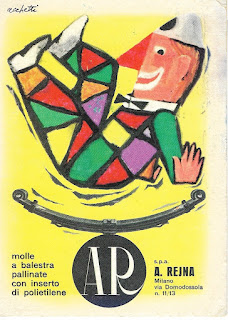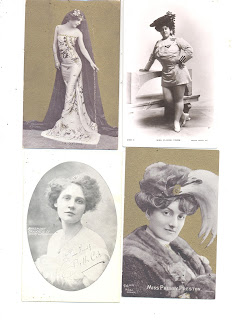Just a brief and rough account of John Pamplin in Australia.. References upon request..
In 1899 juggler
extraordinaire Cinquevalli opened in Sydney. He caused a sensation. However,
another, equally talented ,juggler was also appearing in the city. He caused
barely a ripple.
American John Pamplin was performing with Orpheus McAdoo's
Georgia Minstrels at the same time as Cinquevalli. He was an African American
artist who was an accomplished juggler, sleight of hand expert , gun
manipulator and club swinger.
Before coming to Australia, Pamplin worked with the Georgia
Graduates Company, which was a variety group active between 1895 and 1897. In
the former year they toured the north of the United States and followed this
tour with a transcontinental run in 1897. One of the lead performers on that
tour was Ernest Hogan.
In 1899 Hogan, one of the earliest proponents of rag time,
decided to take a minstrel group to Australia. Unfortunately, he had been
beaten to the country by Orpheus McAdoo and the Georgia Minstrels. Hogan quickly saw that there was not enough
business for two minstrel tours, so some of his group joined Mc Adoo . This could be how John Pamplin
ended up touring Australia with The Georgia Minstrels .
Pamplin was, by all accounts, very talented . Unfortunately,
contemporary reviewers did not describe his turn in any detail He was part of a much larger ensemble
including Ferry the Frog, a contortionist, and a group of singers led by Flora
Batson. Pamplin's feats were
overwhelmed, not only by his fellow minstrels, but by the focus of the media on
Cinquevalli. In 1899, there was only room for one juggler, and that juggler was
the Polish, and white, Cinquevalli.
Of course, Australia at that time was considering
federation. And one of the planks of the Commonwealth was the White Australia
Policy. Racism was a major part of the Australian psyche. The desire to keep
'undesirable elements' off the precious island was paramount. Pamplin was not
only fighting a fellow juggler for attention, he was fighting a whole culture
imbued with racist ideology.
The popularity of the minstrel troupes in Australia was
somewhat surprising. Historian Richard Waterhouse has described the early
popularity of minstrelsy in Australia in terms of 'romantic racialism'. Waterhouse
argues that in the early 19th Century, the image of African Americans as
portrayed in minstrel shows was either of a childlike servant of a kind master
or an exploited Christian slave to an evil landholder. This image of submission
and infantilism was embodied in sentimental ballads of plantation life. Many
early minstrel troupes played to this image successfully.
Waterhouse further suggests that by the turn of the century,
when McAdoo and Pamplin toured, that this image had changed to one where the
infantile slave had become a threat to
white supremacy. In Australia, this was embodied by sinister images of African Americans and Indigenous Peoples, and legislated with The White Australia Policy.
The McAdoo tour of 1899/1900 neatly combined both images of
African Americans. Firstly, the songs concentrated on sentimental ballads.
However, these were combined with new innovations such as the cake walk and rag
time, to produce novelty. The troupe was very popular, but their tours
concentrated on the smaller areas of the country. They visited provincial towns
such as Goulburn, Bathurst and the smaller cities such as Fremantle and
Adelaide. In each area, Pamplin's juggling was applauded.
So how did John Pamplin create a juggling act that appealed
to predominantly white racist colonial audiences in Australia? The details are
sparse, but there are some descriptions which give a clue to his success.
Firstly, it's clear that he was a very skilful and talented
performer . He juggled, he balanced, and he also did some sleight of hand.
His act played upon projecting a foreign appearance, and
combining it with a dangerous edge. Pamplin was in many ways, embodying the fears of the
insular colonials.
He dressed exotically, sometimes in a Zouave uniform, a garb
that included a colourful jacket and unusual
headgear. At other times his persona was
that of an Egyptian or Nubian Prince. A royal from Africa. This was a trope
which had been successfully employed by Indian jugglers in the mid 19th
Century, and it obviously had continuous appeal to Australian audiences.
The main part of Pamplin's act was gun manipulation. He also
caught a cannon ball, a trick that Cinquevalli was performing in the larger
theatres. There was balancing and further juggling, but it was his expertise
with rifles which brought the most comment.
A very clever item was
some gun juggling by John Pamplin who, clad in Zouave uniform, makes first one
and then two guns fly around and all over him in most bewildering style.
Pamplin toured with the Georgia Minstrels in Australia for
some time and then returned to the United States. There he continued to perform
with minstrel troupes. In 1912, with Allen's Minstrels his persona was 'his
satanic majesty, the devil.'
There are records of him performing with a Wild West Show in
1929 where his finale was balancing a revolving table on a pole attached to his
chin.
Pamplin died on February 27 1935 in Danville Illinois. His
death was recorded by the Chicago Tribune as follows;
John M Pamplin,Noted
Magician, Juggler, Is Dead
Danville Ill,. Feb 27-
John M Pamplin, 60, colored, who had an international reputation as a magician,
juggler and knife thrower, died of a heart attack in the Danville business
district yesterday afternoon.

















